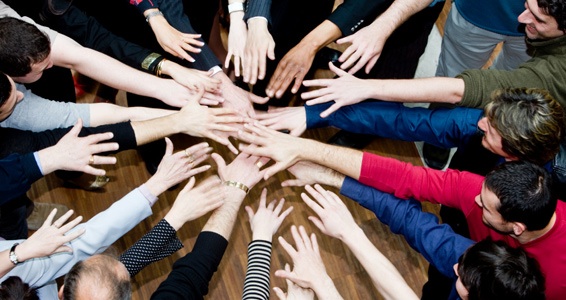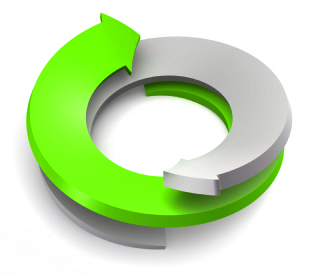How much influence and Social Currency do you possess? How successful are your social media strategies? How do you stack up to the social media heavyweights?
Currently there are algorithms and metrics that can accurately measure how you size up. In fact, it’s a mistake to think that the number of followers or friends someone has equals their influence. This couldn’t be more false. In fact, it takes more than numbers… there are many variables that play into the metrics of how influential someone is through the power of their social media. It’s their Social Currency… your Social Currency, my Social Currency, that tells us how much influence we wield via our social media.
 What is this new math? It’s a lot of computation, but various companies such as Klout, PeerIndex and Kred all attempt to define your social currency (or digital social influence) with an actual score. The higher your score, the more influence or Social Currency you have. So what’s your score and what does Social Currency mean? Why keep score you ask?
What is this new math? It’s a lot of computation, but various companies such as Klout, PeerIndex and Kred all attempt to define your social currency (or digital social influence) with an actual score. The higher your score, the more influence or Social Currency you have. So what’s your score and what does Social Currency mean? Why keep score you ask?
Companies are keeping score because everyone is attempting to define and put a number on the power that is influence. In the current system of economics, influence is derived monetary, political or social capital. Social capital as a component of influence is now changing drastically to include and perhaps be overtaken by our digital personas!
What is social currency? If we are going to talk about it, we need to define it. The most common, as found on Wikipedia is:
Social currency is a common term that can be understood as the entirety of actual and potential resources which arise from the presence in social networks and communities, may they be digital or offline. It derives from Pierre Bourdieu’s social capital theory and is about increasing one’s sense of community, granting access to information and knowledge, helping to form one’s identity, and providing status and recognition.
Social currency represents a shared asset of consumers and company-owned brands. It originates from interaction between customers and consumers.This definition of Social Currency is simpler, but it leaves me still wanting for something I can sink my teeth into, (though I think a wonderful first stab in 2010).When I speak of Social Currency, I frame it though the vehicle of key relationships.
Social Currency is the total economic value of your relationships, both in real life (IRL) and digital. ~Tamara McCleary
 Relationships are the key to our influence. We all build relationships in order to grow our Social Currency. Some of us do it better than others, however, in the end the goal of our social existence (for 99.9% of us) is to build social equity. Social equity assists us in getting the things we desire: a better career, a greater income, exciting friends, intimate relationships, recognition, personal development and self-satisfaction.
Relationships are the key to our influence. We all build relationships in order to grow our Social Currency. Some of us do it better than others, however, in the end the goal of our social existence (for 99.9% of us) is to build social equity. Social equity assists us in getting the things we desire: a better career, a greater income, exciting friends, intimate relationships, recognition, personal development and self-satisfaction. In essence social media is relatively easy for those with a high level of social currency derived from their celebrity positioning, though this doesn’t suggest that celebrities are particularly good at social media, it’s just easier for them than it is for the rest of us.In the world of the 99% “regular” people, social media standing is beginning to offer an opportunity to do the reverse and grow our Social Currency despite our lack of a high celebrity profile or socioeconomic standing. It’s a much more equal playing field than ever before thanks to social media. Recently, at The CMO Club Fall Summit in Beverly Hills, California, I was introduced to 3 young YouTube stars, all in their early 20’s who have made enormously successful careers out of their YouTube channels. They started as virtual unknown’s, but with hard work and understanding their brand, they built up followings of a half million to a million people who regularly tune into their videos. They now represent major commercial brands and share those brands with their followers and make a great income doing so. They have built their Social Currency through the medium of social media, the vehicle that carried them there, YouTube. You can read more about their tips for marketers by reading my recent article at the CMO Solutions Clubhouse by clicking here.Jumping back to an established celebrity, Kim Kardashian, in addition to her television show, appearances, etc., social media is a huge driver of her popularity. With over 26 million Twitter followers, she wields a great deal of influence, an enormous amount of Social Currency, via her social media status. Singer, Taylor Swift, is another example of fame, partially at least, driven by social media. She is famous for her Twitter parties and engaging with her fans directly on social media. I highlight these two examples to demonstrate that Social Currency and social media aren’t mutually exclusive and do in fact support and potentiate each other.
In essence social media is relatively easy for those with a high level of social currency derived from their celebrity positioning, though this doesn’t suggest that celebrities are particularly good at social media, it’s just easier for them than it is for the rest of us.In the world of the 99% “regular” people, social media standing is beginning to offer an opportunity to do the reverse and grow our Social Currency despite our lack of a high celebrity profile or socioeconomic standing. It’s a much more equal playing field than ever before thanks to social media. Recently, at The CMO Club Fall Summit in Beverly Hills, California, I was introduced to 3 young YouTube stars, all in their early 20’s who have made enormously successful careers out of their YouTube channels. They started as virtual unknown’s, but with hard work and understanding their brand, they built up followings of a half million to a million people who regularly tune into their videos. They now represent major commercial brands and share those brands with their followers and make a great income doing so. They have built their Social Currency through the medium of social media, the vehicle that carried them there, YouTube. You can read more about their tips for marketers by reading my recent article at the CMO Solutions Clubhouse by clicking here.Jumping back to an established celebrity, Kim Kardashian, in addition to her television show, appearances, etc., social media is a huge driver of her popularity. With over 26 million Twitter followers, she wields a great deal of influence, an enormous amount of Social Currency, via her social media status. Singer, Taylor Swift, is another example of fame, partially at least, driven by social media. She is famous for her Twitter parties and engaging with her fans directly on social media. I highlight these two examples to demonstrate that Social Currency and social media aren’t mutually exclusive and do in fact support and potentiate each other. Social Currency and social media drive a perpetual feedback loop propelling each higher and higher.I’ve been blessed in the past 9 months to grow my Twitter following from literally zero to over 27,000 followers. I’ve done this through building real relationships with the people who follow me and who I also follow back as well. I’ve seen in my own life a greater interest in what I do as a consequence of my growing buzz on social media. At the same time I have tangible experience and skills to share with those who are interested in what I do. One of the greatest tips I can give you is have something of value to give and be of service to others online. Use your skills, expertise, or services to provide value for your audience if you are wanting to build a following. In other words, bring something to the party if you want people to engage with you and follow you.
Social Currency and social media drive a perpetual feedback loop propelling each higher and higher.I’ve been blessed in the past 9 months to grow my Twitter following from literally zero to over 27,000 followers. I’ve done this through building real relationships with the people who follow me and who I also follow back as well. I’ve seen in my own life a greater interest in what I do as a consequence of my growing buzz on social media. At the same time I have tangible experience and skills to share with those who are interested in what I do. One of the greatest tips I can give you is have something of value to give and be of service to others online. Use your skills, expertise, or services to provide value for your audience if you are wanting to build a following. In other words, bring something to the party if you want people to engage with you and follow you.
By building your social media presence and influence, you have an opportunity to build your Social Currency. A growing Social Currency provides you capital which can be reinvested in yourself and with what you can offer the world as your own contribution. In my recent, and very popular article on The Rise of the Relationship Economy, I explained the growing power of relationships (e.g. Social Currency) in the economy at-large. Grow your social presence genuinely with the best intentions and you too will see the benefits of the rising Relationship Economy in your own life and business. Celebrate the fact that non-celebrities like me and you can have the same power and influence that was once only reserved for the rich and famous. (But still don’t tweet out eating the oatmeal, nobody really cares.)
About the Author
 Tamara McCleary is a national speaker, business performance specialist, writer, social media expert and relationship economist. She has spoken to over 1,000 audiences and is ranked in the Top 1% of global Social Media Influencers. Tamara speaks on the topics of team relationships, employee satisfaction and retention, the emerging relationship economy, social media, sales performance, customer service, customer acquisition and retention, entrepreneurship and more. Tamara is the creator of the trademarked RelationShift® method, enabling individuals and businesses to improve virtually any relationship. Tamara changes lives and transforms businesses. You can visit her at her website at www.tamaramccleary.com or follow her on twitter at twitter.com/TamaraMcCleary.
Tamara McCleary is a national speaker, business performance specialist, writer, social media expert and relationship economist. She has spoken to over 1,000 audiences and is ranked in the Top 1% of global Social Media Influencers. Tamara speaks on the topics of team relationships, employee satisfaction and retention, the emerging relationship economy, social media, sales performance, customer service, customer acquisition and retention, entrepreneurship and more. Tamara is the creator of the trademarked RelationShift® method, enabling individuals and businesses to improve virtually any relationship. Tamara changes lives and transforms businesses. You can visit her at her website at www.tamaramccleary.com or follow her on twitter at twitter.com/TamaraMcCleary.